Among the most important characteristics of a building under construction, in the first place are the duration of construction and the amount of costs, 50% of which are the cost of materials. It is possible to significantly reduce costs through the use of modern construction technologies, for example, the construction of internal partitions from tongue-and-groove slabs. This wall material has long been appreciated by professionals in commercial construction. Those who are engaged in the construction or repair of their homes on their own are reluctant to use it, preferring brick, frame plasterboard structures, etc. As a result, time and money are spent ineffectively, since the market is overflowing with modern inexpensive products, with which labor costs and the cost of work are significantly reduced! To help novice builders minimize costs, bestx.htgetrid.com/en/ offers an overview of the best tongue-and-groove manufacturers for 2020, ”compiled by buyers and experts.
Content
- 1 What are tongue-and-groove plates
- 2 Specifications
- 3 Scope of tongue-and-groove plates
- 4 Criteria for the selection of tongue-and-groove plates
- 5 What to look for
- 6 Technology for the construction of partitions from GWP
- 7 Top manufacturers
- 8 Where to buy tongue-and-groove plates
- 9 Rating of quality tongue-and-groove plates
What are tongue-and-groove plates
First you need to understand what it is and get acquainted with the scope of this interesting building material.
Structurally, these are blocks, with grooves and ridges on the mating surfaces.
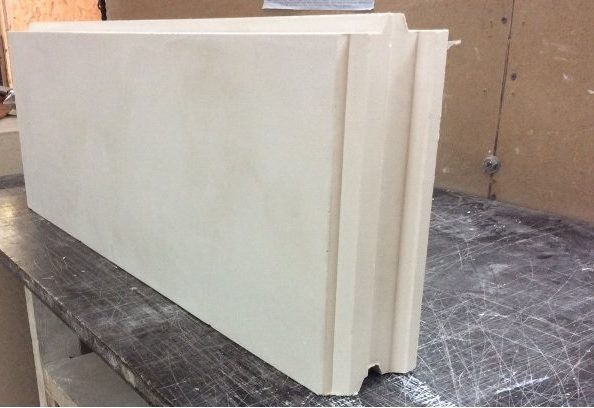
When erecting partitions, a ridge / groove connection is formed. As a masonry mortar, special compositions based on dry gypsum mixtures are used. Some craftsmen use tile glue.

Important! Ready-made gypsum glue for masonry GWP must be used within 60 minutes, until it loses its mobility.
Depending on the composition, design and moisture resistance, the following types of blocks are distinguished:
- Plaster. Made from a mixture of plaster of paris and plasticizing additives.
- Silicate. For their manufacture, quartz sand, water, quicklime are mixed.
- Corpulent, i.e. monolithic without voids.
- Hollow. Monolithic surface and internal voids of various cross-sections: round of various diameters or rectangular. Hollowness does not reduce the strength of the products. They are lighter than corpulent and easier to handle.
- Moisture resistant, with hydrophobic additives. Can be used in rooms with high humidity.
6. Ordinary, without water-repellent additives. They are used only in dry rooms. When water gets in, they spread out.
The groove / ridge shape in section forms a rectangle or trapezoid. Most often, manufacturers produce blocks of the standard size 667x500 mm, 80 or 100 mm thick.
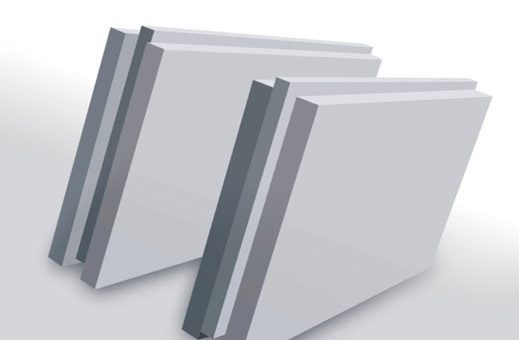
Some manufacturers produce products of reduced dimensions, for example, 495x248x80 mm. Such blocks are lighter and easier to work with. But they also have a drawback - the absence of a groove / ridge on the horizontal mating surfaces.
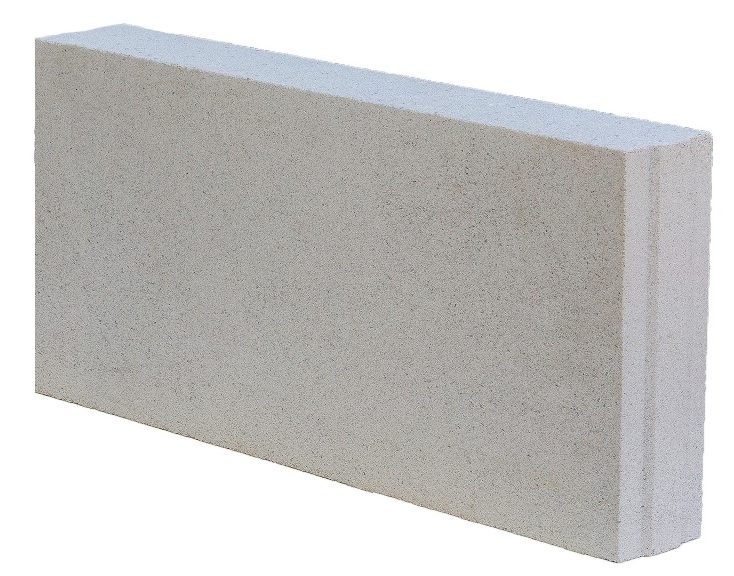
Specifications
Before purchasing a GWP, consider the following characteristics:
Density
For gypsum products, it is small, only 1350 kg / m3.However, this is enough to safely attach a dish box or shelf to such a wall. The main thing is not to drill the wall with a puncher and not to pound on the dowel with a hammer. With the correct use of screws and a screwdriver, there will be no problems. The density of silicate blocks is 1870 kg / m3.
Thermal conductivity
Manufacturers declare the thermal conductivity coefficient in the range from 0.040 to 0.045 W / (m ° C). Not a bad indicator that the material keeps heat well. For the construction of internal self-supporting walls made of GWP, the use of heat insulators is optional.
Soundproofing
All manufacturers prescribe a sound insulation coefficient of 45-47 dB. However, do not flatter yourself. When arranging inter-apartment walls, an additional layer of sound insulation will not hurt at all.
Strength
Two characteristics are considered:
- flexural strength for gypsum panels usually does not exceed 2.5 MPa;
- for compression - no more than 5MPa.
Silicate panels have a strength of M 150 or 15 MPa, i.e. they are three times stronger than plaster.
Vapor permeability
In gypsum conventional tongue-and-groove blocks, vapor permeability is high. This explains their ability to absorb significant amounts of moisture. For moisture-resistant panels, this indicator is lowered to a minimum. Gas silicate products also have minimal vapor permeability.
Scope of tongue-and-groove plates
GWP are used in construction, renovation and redevelopment of apartments only for the construction of self-supporting structures. These include interroom and interroom partitions. The latter are often made double, from blocks, 100 mm thick, with an air gap of 50 mm between them.
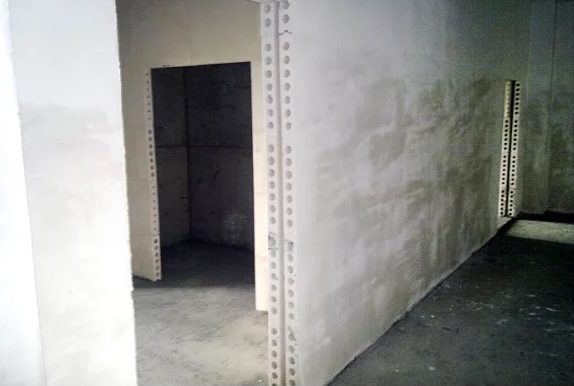
This technique improves the soundproofing and thermal insulation qualities of the structure. For the construction of capital (bearing) walls, tongue-and-groove blocks are not strong enough and moisture resistant.
Criteria for the selection of tongue-and-groove plates
The choice of one or another type of GWP depends on the purpose of the structure, the strength of its base, the expected load, dimensions, weight and cost of the product.
Moisture resistant
In rooms with high humidity, structures are erected from solid moisture-resistant slabs. They are easy to distinguish from ordinary ones as they have a greenish tint. Made of gypsum with water-repellent additives, they absorb moisture no more than 5% of their own volume.
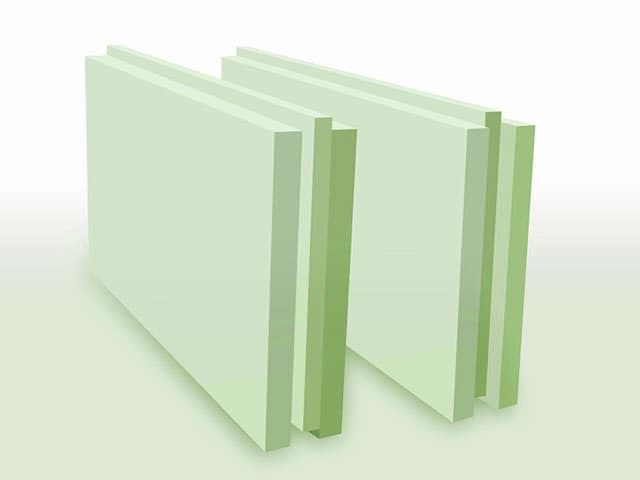
The hygroscopicity of conventional gypsum products is about 26-32%. The difference is palpable. Silicate GWPs cannot be divided into conventional and moisture resistant ones, since their hygroscopicity is minimal. They are certainly suitable for use in washrooms and bathrooms.
Conventional
They are used to divide the space between dry rooms: rooms and apartments. Application for separation from the common space of bathrooms is permissible only with additional surface treatment with waterproofing and tiling.
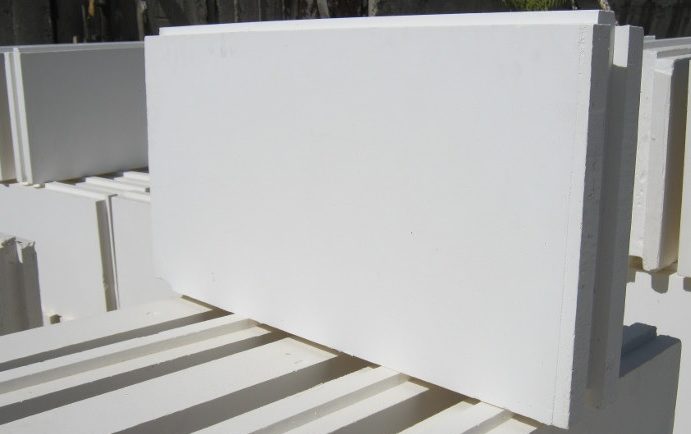
Void
For interior structures, it is better to use hollow blocks, gypsum and silicate. They are lighter than full-bodied ones, by 25% (on average). It is easier to handle them and it is easier to do the work by the device of hidden wiring. If the base is a plank floor on logs, it is better not to overload it. In this case, "voids" should be chosen.
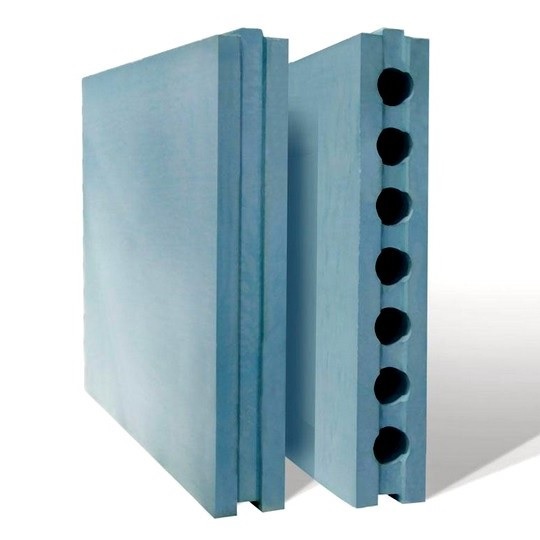
Corpulent
The dividing walls are made of 100 mm thick solid panels. Such a design can also be made double, laying the gap with a roll of mineral wool-based material or leaving an air gap. If you have to hang shelves for dishes or books on the wall, it is better to choose full-bodied products. Gypsum is easier to drill, silicate is more durable. The use of plastic dowels for screwing in self-tapping screws is mandatory in both cases.
Silicate
They differ from gypsum in smaller sizes, greater strength and the absence of grooves and ridges on horizontal joining surfaces. On the one hand, it is more convenient to work with them (less weight and dimensions), on the other hand, the absence of a ridge / groove connection in the horizontal plane complicates the work, forcing the master to constantly ensure that the blocks fit in the same plane (do not wag) ...But the hinge of shelves on a structure made of silicate PPG is not difficult.
What to look for
First of all, on the weight of the panel. Products of the same size and type from different manufacturers may differ in weight. A full-bodied standard panel from "Knauf" or "Magma" weighs 28 kg, and the same from "Aksolit" or Peshelan plant - all 35. It is clear that you should choose lighter products.
Gypsum panels are a "delicate" material. It must be transported and stored carefully, otherwise it is impossible to do without chips and cracks. GWP differs from brick by a smooth surface that does not require leveling before painting or wallpapering. Such a finishing operation as plastering is no longer needed. It is enough to putty the joints and apply a thin layer of finishing putty. Incorrect transportation or storage on gypsum panels results in broken corners and edges, chips on the surface, broken ridges and broken grooves. All this will have to be putty and leveled.
Technology for the construction of partitions from GWP
Before starting work, you should make sure that the base under the wall is perfectly flat, with zero slopes. Even small differences in base height will cause cracks in the structure. For better sound insulation, a damper tape made of expanded polyethylene is laid under the first row. It is also laid at the junctions between the GWP and the main wall.
As in a brick partition, tongue-and-groove panels are laid with bandaging. Alignment of vertical seams is unacceptable.
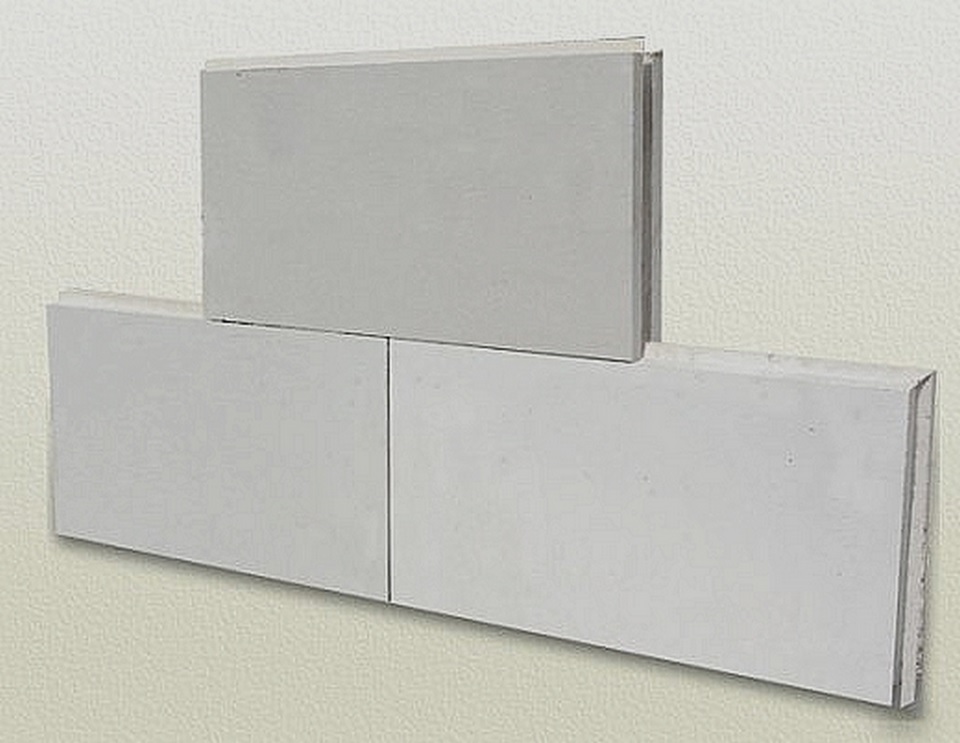
Products are easily cut with a reciprocating saw or a hand saw for wood. It is not difficult to dissolve one or several pieces. If you have to carry out a large amount of work in an apartment building, you won't cut too much with a hacksaw, your hands will fall off. The process needs to be mechanized.

On a note! During repairs with redevelopment, with a large amount of work, you can cut blocks with a grinder with a diamond wheel. The process is accompanied by the formation of a large amount of dust and it is better to carry it out outdoors. This is one of the disadvantages of using gypsum products.
For stacking blocks, special adhesives are used as a solution, which are produced by most of the companies that have established the production of GWP. In wholesale and retail, there are always tongue-and-groove panels and glue to them from one manufacturer.
For connection with the main wall, metal corners and self-tapping screws are used. To give the structure more rigidity, adjacent GWPs are connected to each other with metal plates, laying them through two panels.
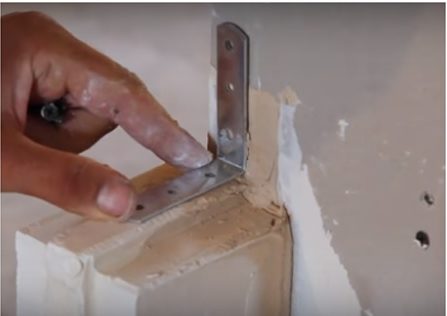
The installation locations of the door blocks are not overlapped with jumpers if the opening width does not exceed 900 mm. A gap of 20-30 mm is left between the partition and the ceiling. It can be repaired with the same masonry mortar or polyurethane foam.
Top manufacturers
- Knauf
The company was founded by the Knauf brothers, mining engineers in 1932. The first products of the company were dry building mixtures. Plasterboard production started in 1958. In the late 70s, a representative office of the company was opened in the USSR. Today the international group of companies Knauf is the largest investor in the construction industry in the CIS countries. The popularity of Knauf models is due to the consistently high quality.
- Magma
Republic of Mordovia, group of companies "Mordovcement". One of the largest suppliers of dry building mixes, gypsum plasterboards and tongue-and-groove blocks. The production lines are equipped with the latest German equipment.
- Gypsum polymer
The pride of the Perm Territory, the company "Gipsopolimer", one of the largest manufacturers of dry building mixtures and gypsum building materials. Founded in 1953. Produced dry gypsum plaster, an analogue of GKL. It received its present name after corporatization in 1993. The GWP production line was launched in 2013. Inexpensive products of the company are in constant demand among builders.
- ECO
Yaroslavl company. On the market since 2004. The main specialization is reinforced concrete elements, piles.The enterprise is equipped with modern equipment of the Spanish company "Tensyland". Silicate hollow bodies are produced on a production line supplied by the German company Wehrhahn. "
- Forman
The brand belongs to the Samara gypsum plant. The company issued the first batch of stucco in 1944, and soon takes a leading position in the industry. In 2013, the enterprise begins production of GWP of the European standard at the facilities of a new plant equipped with the most modern equipment of the German company Grenzebach Gmbh.
- Volma
In 1943, the construction of a gypsum plant began in Stalingrad. The destroyed city had to be rebuilt, and there was a sorely lack of building materials. Before the beginning of perestroika, the enterprise developed dynamically, becoming one of the largest in the construction industry of the USSR. During perestroika, production fell steadily and almost completely stopped. With the change of owner, in 1999 the enterprise was revived under the new name "Volma".
A new life began with the development of gypsum plasterboard production. Two years later, the production of dry building mixtures was added to this, and since 2003 - the production of tongue-and-groove slabs. Today the company's factories produce products in Volgograd, Voskresensk, Chelyabinsk, Orenburg, as well as in Tatarstan, Adygea, the Republic of Belarus. Popular Volm models are in high demand in the domestic construction market.
- KZSM
Kaluga Building Materials Plant. Has been working since 2000. The low-cost products of KZSM are of high quality, confirmed by appropriate certificates.
- MAZD
The Moscow Trunk Plant of Large-Panel Partitions has existed for more than 50 years. MAZD blocks are manufactured on equipment supplied by the Italian company "Carroro".
- OOO Axolit
A young company for the production of gypsum building materials. The production facilities started working in 2013. The company specializes in gypsum plasterboards, tongue-and-groove panels, gypsum-based dry building mixtures.
The list of enterprises can be continued for a long time. Dimensions, assortment, technical characteristics of panels from different manufacturers differ little from each other. So the choice of the manufacturer has to be determined more in terms of the price of the products.
Where to buy tongue-and-groove plates
The easiest way to make a purchase is at your nearest building materials store. Delivery from afar can cost more than the products themselves. Most stores and wholesale suppliers have their own internet resources that allow you to order GWP online. The same can be done in the online store, if the supplier's base is located nearby. Before buying, you should listen to the advice and recommendations of professional builders regarding the quality of products from a particular supplier, clarify how much it costs and determine the required amount of goods, taking into account waste. On the manufacturer's website, you can find a calculator with which it is easier to make all the calculations.
Rating of quality tongue-and-groove plates
10. KZSM
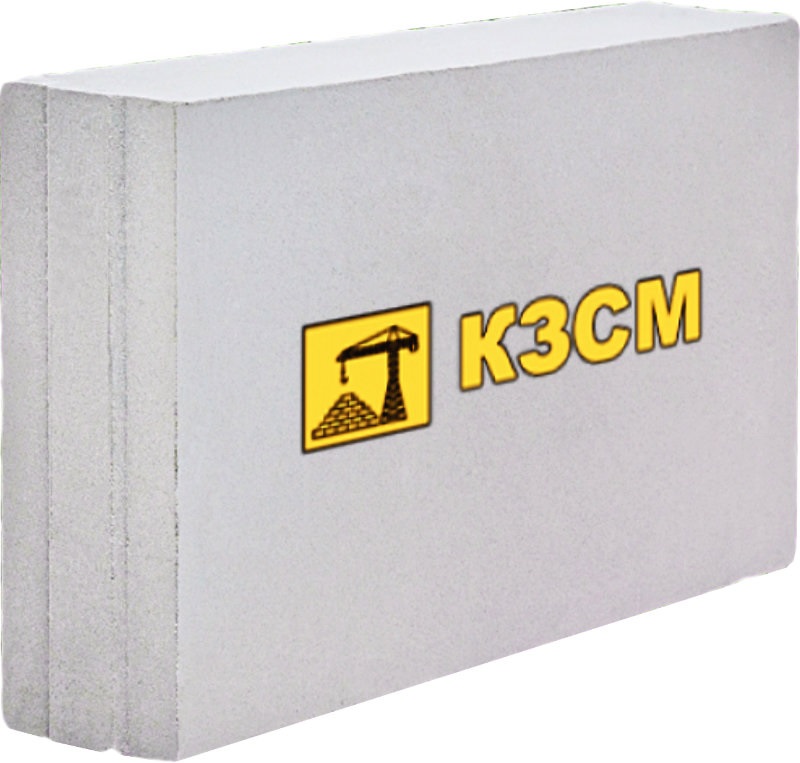
The review opens with the products of the Kaluga Building Materials Plant - a full-bodied gas silicate tongue-and-groove block. The blocks are 280 mm high, 248 mm long, 80 mm thick, and weigh 18 kg. It differs from the majority of tongue-and-groove panels in smaller dimensions and weight, which makes it more convenient when performing work. This is a plus. But there is also a minus - the absence of grooves and ridges on horizontal planes. Sound insulation values are high, ranging from 48 to 52 dB. Great budget option.
Advantages:
- low thermal conductivity;
- good noise isolator;
- affordable cost.
Disadvantages:
- the absence of a groove and a ridge on the horizontal plane of the block.
| Model name / country of origin | Specifications | average price |
|---|---|---|
| KZSM / Russia, Kaluga | Block tongue-and-groove silicate solid. Sound insulation - 47 dB, thermal conductivity coefficient - 0.045 W / m ° С. Dimensions 495x248x80mm. Weight - 18 kg. Consumption of 8 blocks per sq.m. | 58 rubles |
9. Gypsum polymer GWP
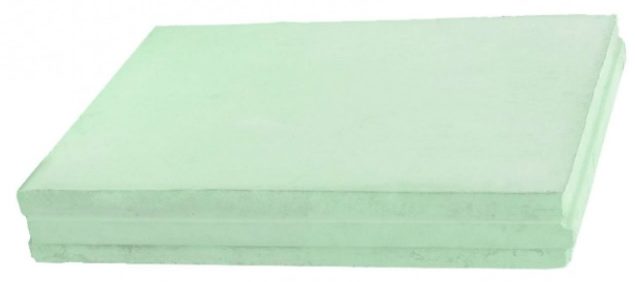
The hollow moisture-resistant panel of the Perm company "Gipsopolimer" has the standard dimensions for this wall material 667x500x80mm. Rectangular grooves and ridges. The strength indicators are not bad for a gypsum panel, but the weight of 29 kg exceeds the mass of hollow products of the same size from other manufacturers. It is used in dry and normal humidity rooms.
Advantages:
- ease of installation;
- low cost;
- smooth surface does not require leveling before finishing.
Disadvantages:
- great weight.
| Model name / country of origin | Specifications | average price |
|---|---|---|
| Gypsopolymer PGP / Russia, Perm | Hollow, white, area 0.33 sq.m. Withstands loads of no more than 5.0 MPa in compression, no more than 2.5 MPa for bending, with a density of 1250 kg / m3. Dimensions 667x500x80mm. Weight - 29 kg. | 145 rubles |
8. Peshelan
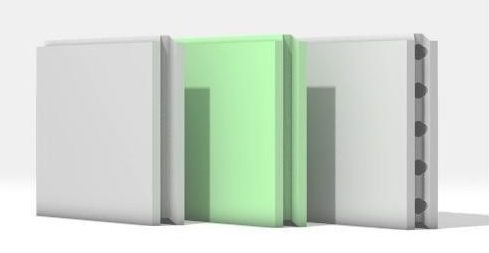
Plates of the Peshelansky gypsum plant (Nizhny Novgorod region) have standard dimensions and weight of 36 kg. They are used in the construction of partitions in dry residential and office buildings. The presence of rectangular grooves and ridges greatly facilitates the erection of self-supporting structures, however, the weight of each block exceeds two poods. Alone, a large volume of masonry cannot be overpowered, especially starting from the third or fourth rows. The smooth surface of the slabs can significantly reduce the amount of pre-treatment of the walls before finishing.
Advantages:
- smooth and even surface;
- affordable cost.
Disadvantages:
- large plate weight;
- low strength.
| Model name / country of origin | Specifications | average price |
|---|---|---|
| GWP standard Peshelan / Russian Federation, Republic of Mordovia | Full-bodied, white, area 0.33 sq.m. Dimensions 667x500x80mm. Weight - 36 kg. Compressive strength - 3, 5 MPa, bending strength - 1.7 MPa. | 179 rubles |
7. Magma
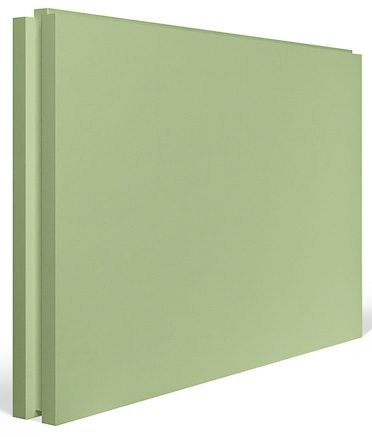
Full body water resistant standard size, weight 28 kg, with rectangular grooves and ridges. Easy to install. Can be used in rooms with high humidity. The average cost of one piece is 220 rubles. For one square meter of a partition (three pieces), the buyer will pay 660 rubles (excluding shipping costs). Good value for money.
Advantages:
- waterproof;
- relatively light;
- smooth flat surface.
Disadvantages:
- not identified.
| Model name / country of origin | Specifications | average price |
|---|---|---|
| Magma / Russian Federation, Republic of Mordovia | Full-bodied, moisture resistant, area 0.33 sq. M. Dimensions 667x500x80mm. Weight - 28 kg. | 220 rubles |
6.M-150 Eco

Silicate panels M-150 are distinguished by reduced (compared to standard) dimensions and weight. They are easier to install, they are more durable and moisture resistant compared to gypsum wall materials. The absence of grooves and ridges in the horizontal plane requires a certain level of skill from the masons. For the construction of a 1.0 m2 partition, 8 pieces are needed. At the cost of one panel 95 rubles, one square meter of such a wall will cost 744 rubles.
Advantages:
- relatively small dimensions and weight;
- strength;
- moisture resistance.
Disadvantages:
- lack of grooves and ridges in the horizontal plane.
| Model name / country of origin | Specifications | average price |
|---|---|---|
| M-150 ECO / Russia | Silicate hollow, moisture resistant, area 0.123 sq. M. Dimensions 498x248x70mm. Weight 12 kg. | 93 rubles |
5. Forman

Hollow moisture resistant standard, weight 22 kg. It is used for the construction of self-supporting wall fences in dry and wet rooms. The relatively low weight allows you to perform a large amount of work in one shift. Smooth and smooth surface of products does not need additional leveling before wallpapering or painting. The average price per piece is 195 rubles. The cost of one square meter of a partition (three pieces) will be 585 rubles (not counting the cost of glue, fasteners, transportation and work).
Advantages:
- European quality;
- low thermal conductivity;
- high degree of noise insulation;
- affordable price.
Disadvantages:
- not identified.
| Model name / country of origin | Specifications | average price |
|---|---|---|
| Forman / Russia, Samara | Tongue-groove hollow moisture resistant, green, area 0.33 sq. M. Dimensions 667x500x80mm. Weight - 22 kg. | 195 rubles |
4. Aksolit
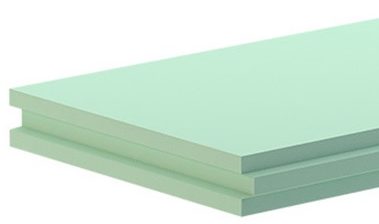
Axolite produces conventional and moisture-resistant, hollow and full-bodied GWPs, standard sizes 667x500x80mm. And our review deals with a full-bodied moisture-resistant plate. This is a fairly strong gypsum product; when tested for bending strength, it can withstand a load of 2.5 MPa. High thermal conductivity - 0.208 W / (m ° C). When erecting interior structures, a thermal insulation device will be required. The average price of one piece is 210 rubles. For 1.0 m2 (three pieces) you will have to pay 660 rubles. This is somewhat more expensive than the previous samples.
Advantages:
- ease of installation;
- smooth surface;
- moisture resistance.
Disadvantages:
- the weight of one panel is 35.2 kg.
| Model name / country of origin | Specifications | average price |
|---|---|---|
| Aksolit / Russia | Full-bodied, moisture-resistant, tongue-and-groove slab, green, with an area of 0.33 sq.m. Dimensions 667x500x80mm. Weight - 35.2 kg. Thermal conductivity 0.208 W / m ° C. | 210 rubles |
3. MAZD 80
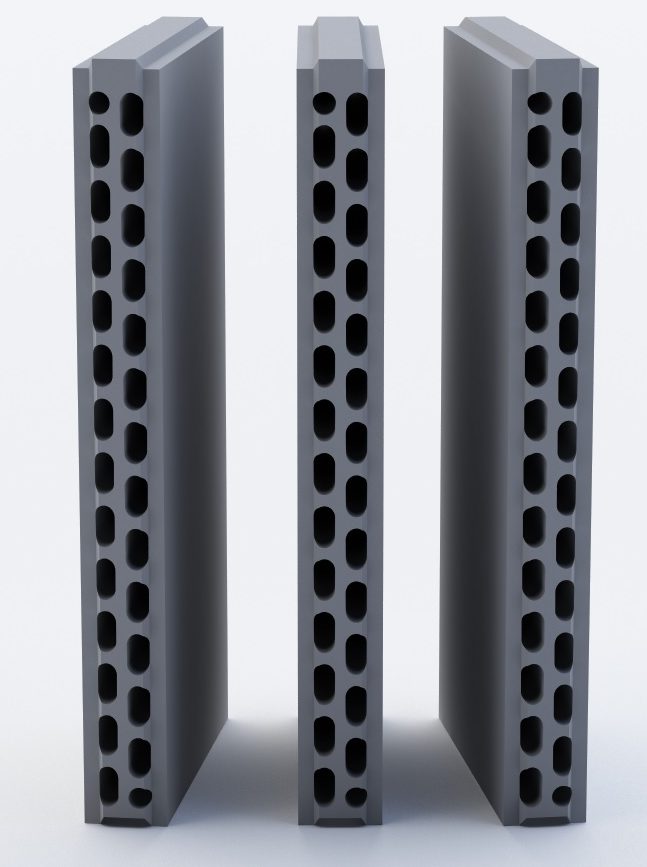
Hollow waterproof panels made of a mixture of gypsum, cement and pozzolanic additives have dimensions of 700x358x80 mm. Each item weighs 16 kg. The grooves and ridges are trapezoidal and incompatible with wall materials from other manufacturers. At the cost of one piece of 127 rubles, the cost of 1.0 m2 of the partition will cost only 508 rubles. Excellent value for money and quality.
Advantages:
- European quality;
- sizes convenient for work;
- light weight;
- affordable price.
Disadvantages:
- not identified.
| Model name / country of origin | Specifications | average price |
|---|---|---|
| MAZD 80 / Russia, Moscow | Hollow tongue-and-groove slab (40%), moisture resistant, with an area of 0.25 sq.m. Soundproofing - 35 dB. Density no more than 1100 kg / cubic meter. Dimensions 700x358x80mm. Weight - 16 kg. 1 sq.m. - 4 things. | 127 rubles |
2. PGP Volma
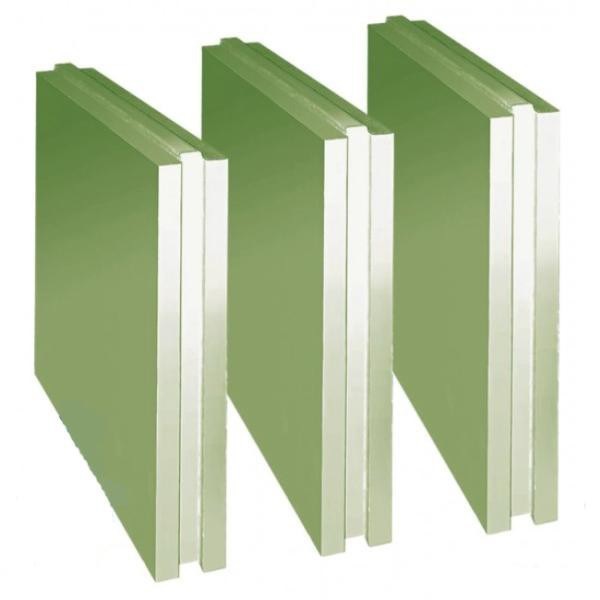
Volma's GWPs are of high quality and affordable prices. Our review presents hollow moisture-resistant slabs of a standard size, weighing 22 kg, with an average price of 190 rubles per piece. For 1.0 m2 of high-quality, lightweight material for the construction of partitions, the buyer will pay only 585 rubles.
Advantages:
- moisture resistance;
- high quality surface;
- affordable price;
- relatively low weight of the plate.
Disadvantages:
- not identified.
| Model name / country of origin | Specifications | average price |
|---|---|---|
| Volma Voskresensk / Russia | The slab is tongue-and-groove hollow moisture resistant, green, with an area of 0.33 sq.m. Dimensions 667x500x80mm. Weight - 22 kg. | 190 rubles |
1. PGPV Knauf
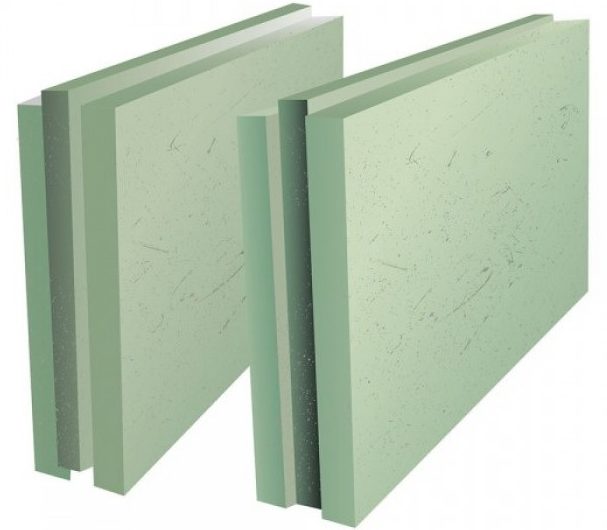
Knauf branded GWPs receive the best reviews and occupy the first line of our rating. Products are of excellent quality, high strength characteristics. The Knauf stove in standard dimensions weighs only 28 kg. The surface is smooth, without defects or deviations. Thermal conductivity is low, the material keeps heat well. The average price of one panel is 305 rubles. For 1, 0 m2 will have to "pay off" 915 rubles. It's a lot. But Knauf is a brand that comes at a price.
Advantages:
- moisture resistance;
- strength;
- low thermal conductivity;
- high surface quality;
- geometry without deviations.
Disadvantages:
- high price.
| Model name / country of origin | Specifications | average price |
|---|---|---|
| Knauf / Germany | Full-bodied, moisture-resistant, tongue-and-groove slab, green, with an area of 0.33 sq.m. Dimensions 66.7x50.0x8.0 cm.Weight -8 kg. Compressive strength 5.0 MPa, bending strength -2.4 MPa, thermal conductivity 0.29 W / m ° C | 305 rubles |
Tongue slabs are a popular wall material. Their indisputable advantage is the budget price and ease of use, which does not require special professional skills and many years of experience. The domestic market is replete with offers from numerous domestic and foreign companies.The editors of the site hope that this review will answer the main questions: how to choose the appropriate option, which company of the product is better to buy and not make mistakes when choosing.












